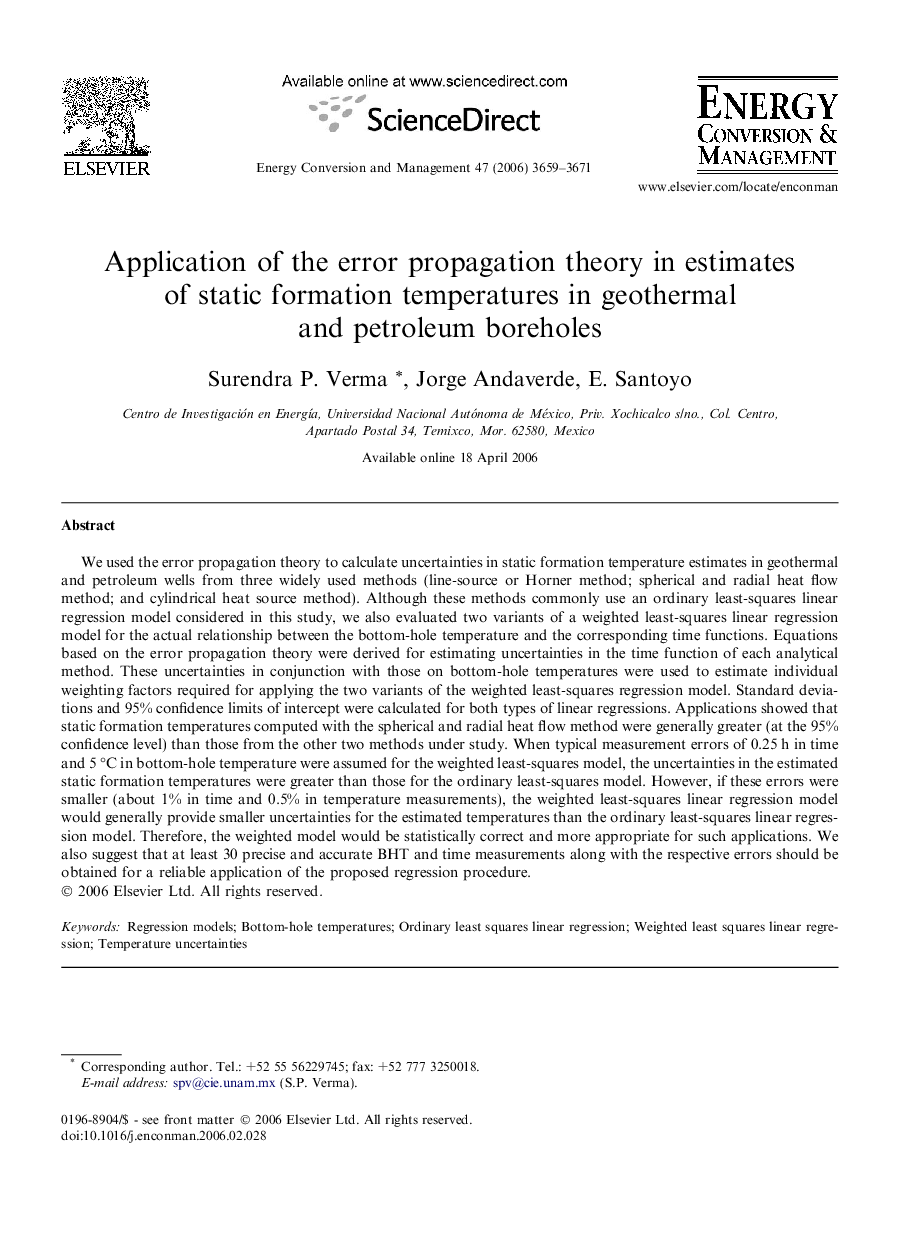| کد مقاله | کد نشریه | سال انتشار | مقاله انگلیسی | نسخه تمام متن |
|---|---|---|---|---|
| 773054 | 897777 | 2006 | 13 صفحه PDF | دانلود رایگان |

We used the error propagation theory to calculate uncertainties in static formation temperature estimates in geothermal and petroleum wells from three widely used methods (line-source or Horner method; spherical and radial heat flow method; and cylindrical heat source method). Although these methods commonly use an ordinary least-squares linear regression model considered in this study, we also evaluated two variants of a weighted least-squares linear regression model for the actual relationship between the bottom-hole temperature and the corresponding time functions. Equations based on the error propagation theory were derived for estimating uncertainties in the time function of each analytical method. These uncertainties in conjunction with those on bottom-hole temperatures were used to estimate individual weighting factors required for applying the two variants of the weighted least-squares regression model. Standard deviations and 95% confidence limits of intercept were calculated for both types of linear regressions. Applications showed that static formation temperatures computed with the spherical and radial heat flow method were generally greater (at the 95% confidence level) than those from the other two methods under study. When typical measurement errors of 0.25 h in time and 5 °C in bottom-hole temperature were assumed for the weighted least-squares model, the uncertainties in the estimated static formation temperatures were greater than those for the ordinary least-squares model. However, if these errors were smaller (about 1% in time and 0.5% in temperature measurements), the weighted least-squares linear regression model would generally provide smaller uncertainties for the estimated temperatures than the ordinary least-squares linear regression model. Therefore, the weighted model would be statistically correct and more appropriate for such applications. We also suggest that at least 30 precise and accurate BHT and time measurements along with the respective errors should be obtained for a reliable application of the proposed regression procedure.
Journal: Energy Conversion and Management - Volume 47, Issue 20, December 2006, Pages 3659–3671